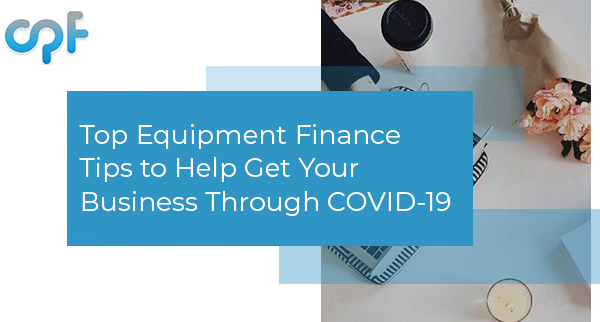
COVID-19 has presented a range of challenges for almost every person and every business in Australia, as well as most of the world. Supply chains have been impacted, consumer spending has moderated, and behaviours have shifted to new channels. As the globe continually adapts to the new economic and social environment that is here to stay, businesses need to identify the opportunities that are within their grasp.
Pursuing new growth avenues or business models requires investment and in many cases, new equipment. Equipment finance is one way to fund the purchase of new commercial assets for your business. As you might have already experienced, banks have not loosened their credit criteria, despite the difficulties of COVID-19. Here are our top tips to ensure your business is well placed to take advantage of any opportunities that equipment finance may offer your business.
Understand the benefits of equipment finance
Take some time to think about how your business might benefit from upgrading your equipment using finance. Instead of a potentially large initial capital outlay, equipment finance allows your business to access (and sometimes take ownership) of new productive assets with very little upfront payment. This enables businesses to balance their cash flow and provides ample flexibility to acquire (and dispose of) assets when required. This also means that you can access quality equipment, across a wide range of products and services (even software!) with no risk of obsolescence as you can easily upgrade when necessary.
“There are several factors you need to watch out for when applying for an equipment finance deal.”
Since this form of financing is secured (the equipment is used as collateral), you can usually borrow a significant amount with fair, fixed-rate interest available. There are also a number of potential tax benefits, such as having no GST owed on the repayments. While it all looks great on paper, there are several factors you need to watch out for when applying for an equipment finance deal – let’s take a look at a few.
Keep your financials up to date
When it comes to managing your business, your financial statements and records are a critical component. Whether you’re considering applying for finance or not, your financials should always be kept accurate and up to date. If they’re not, it might be time for a new bookkeeper or accountant!
“You need to understand how an equipment finance deal will impact your financial position.”
When it comes to equipment finance, there are two main reasons why your financials are so important. Firstly, lenders use them to assess your suitability for a loan. Even though the finance is secured, lenders need to see that you have the cash flow to meet your repayments and that you are generally a stable business to deal with. Secondly, you need to understand how an equipment finance deal will impact your financial position, including the bottom line. Do you have any opportunities to save money? Will a shift from depreciation to a loan expense benefit your tax obligations? These questions can only be answered if you have a clear picture of your financial position.
Budget your repayments
Once you have your financials in order, you can begin to budget your potential equipment finance repayments accurately. With fix-rate finance, it’s easy to calculate your future repayments. Using our equipment finance calculator, it’s straightforward to get an idea if your deal stacks up:
- Input the amount of the loan.The more you borrow, the higher your repayments will be.
- What is the term of the facility? Equipment finance loans can be spread over many years. Just like a mortgage, the longer your term, the smaller the monthly repayment.
- Residual value. This refers to the value of the asset after the loan term has finished. Discuss this with your lender or broker to get the best idea for your particular commercial asset.
- Interest rate %. The lower the interest rate, the lower your repayments will be.
The calculator will output your estimated monthly payments under two circumstances: payments in advance and payments in arrears. If your lender requires payments at the beginning of the month, less interest will accrue than if you pay at the end. Use these estimates to assess if the terms of the facility stack up for your situation so you can start preparing your business financially.
Sort out any tax arrears
Having any form of tax debt to the ATO is a huge red flag, particularly for equipment finance lenders with the best interest rates. If you want to secure a great deal, make sure you’re on top of all your other debts and obligations, including your taxes. The ATO has been quite lenient with businesses during COVID-19, although it won’t stay that way forever. If you’re behind, have a chat with them to negotiate a tax payment plan or other solution to clear your tax debts before you look to apply for equipment finance.
Use an equipment finance broker
When it comes to getting the best result from equipment finance, enlisting the help of an expert is your best bet. Experienced equipment finance brokers have the skills and industry knowledge to represent your business favourably and negotiate with their panel of lenders on your behalf to get you the best rate and terms. Brokers are up-to-date with the market and can provide advice on your best options and present a range of solutions that are aligned with your goals, not the banks. They’re flexible and there whenever you need them, ensuring you get all the support you need along the way.
Capital Plus Finance is an experienced equipment finance broker that has your best interests at heart. The team at Capital Plus Finance will do everything we can to help you secure a suitable finance solution for your small business. Please give us a call anytime to find out more or to have an obligation-free chat about your business’s funding situation.




